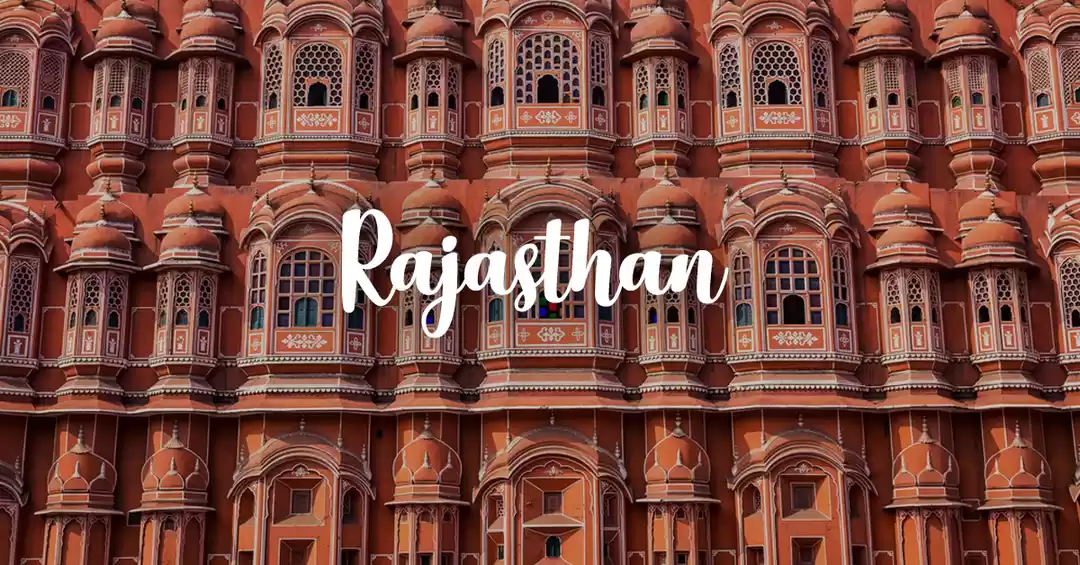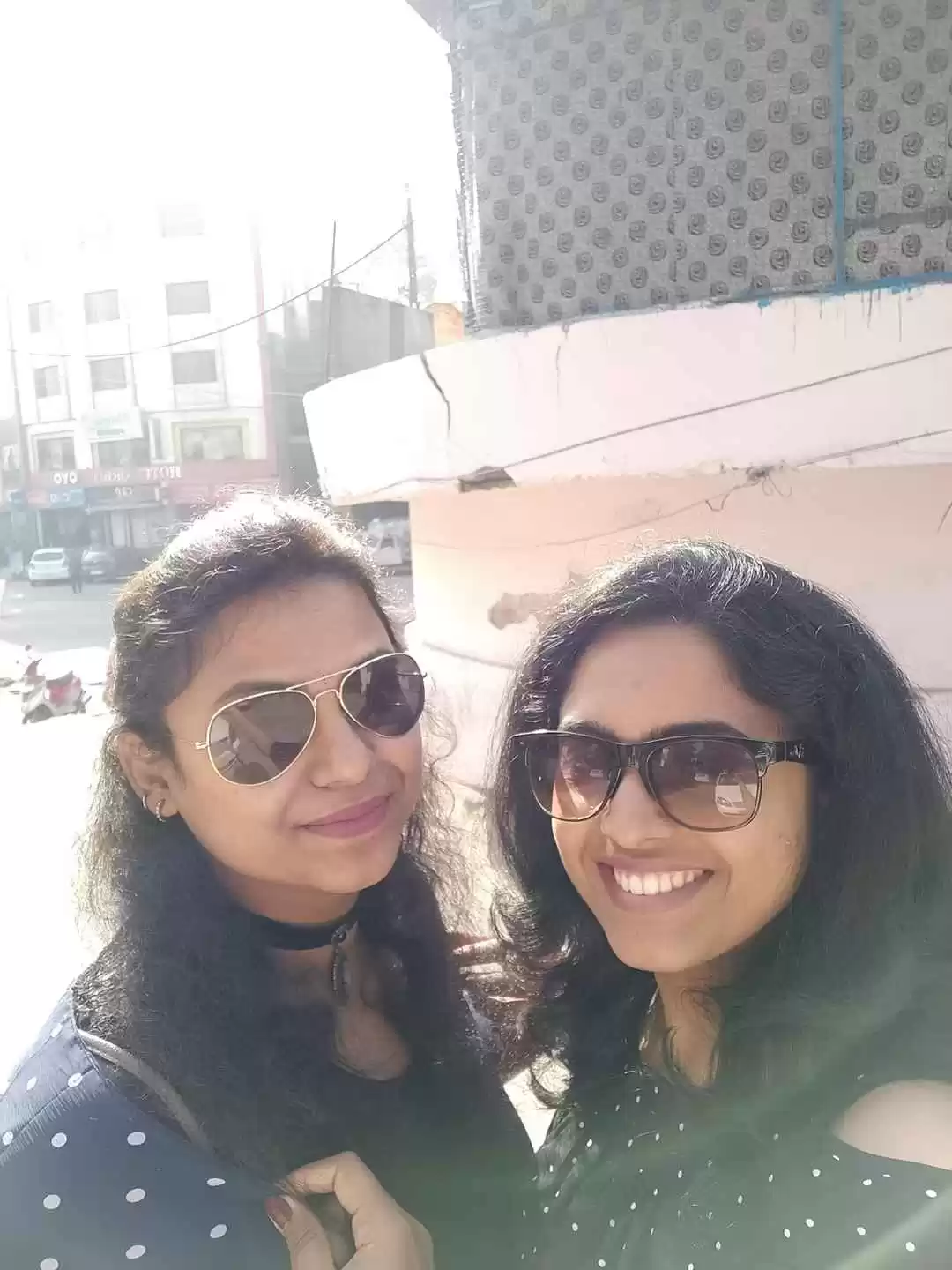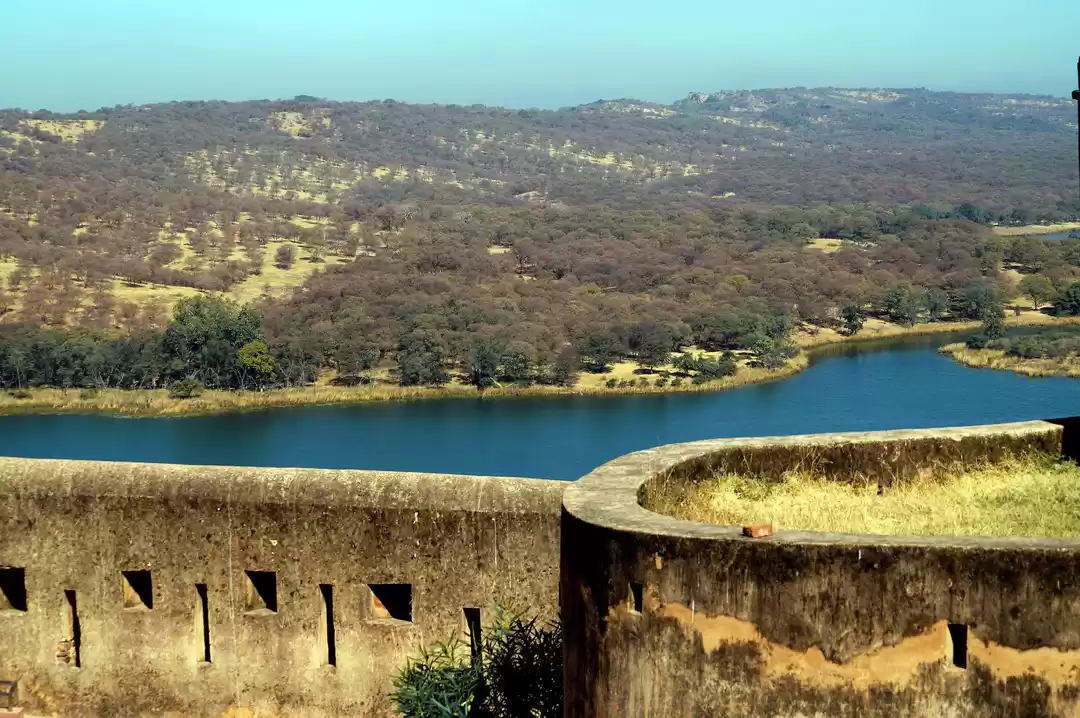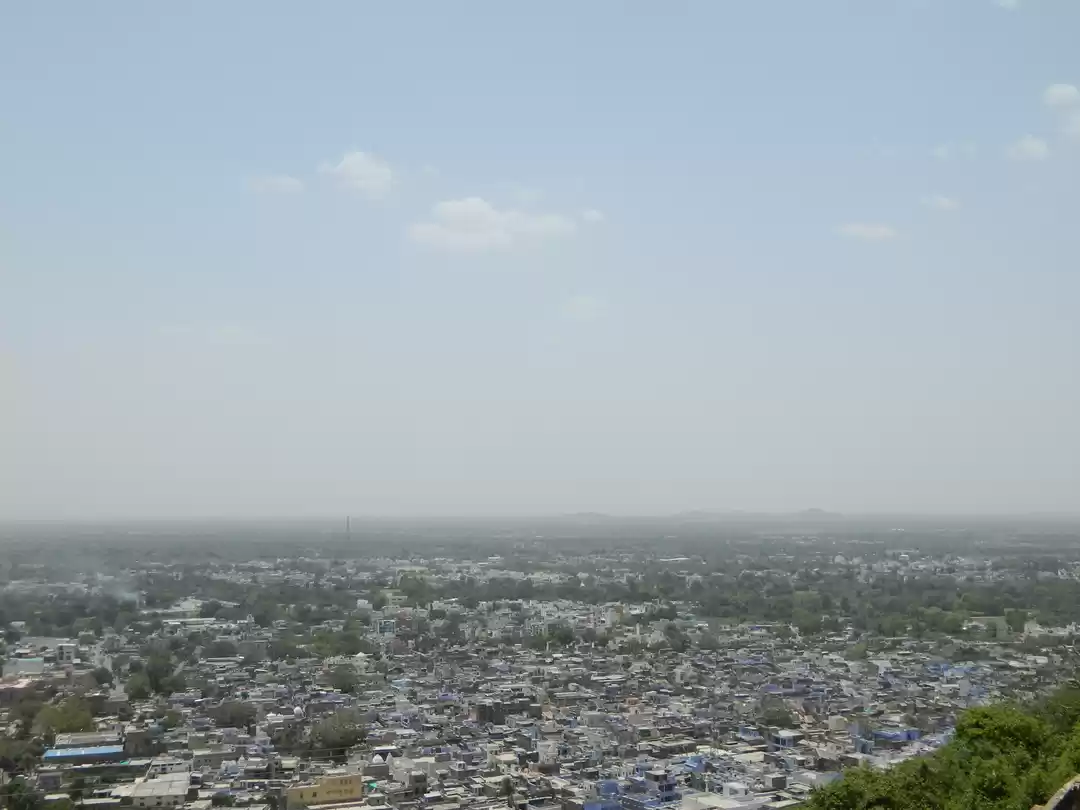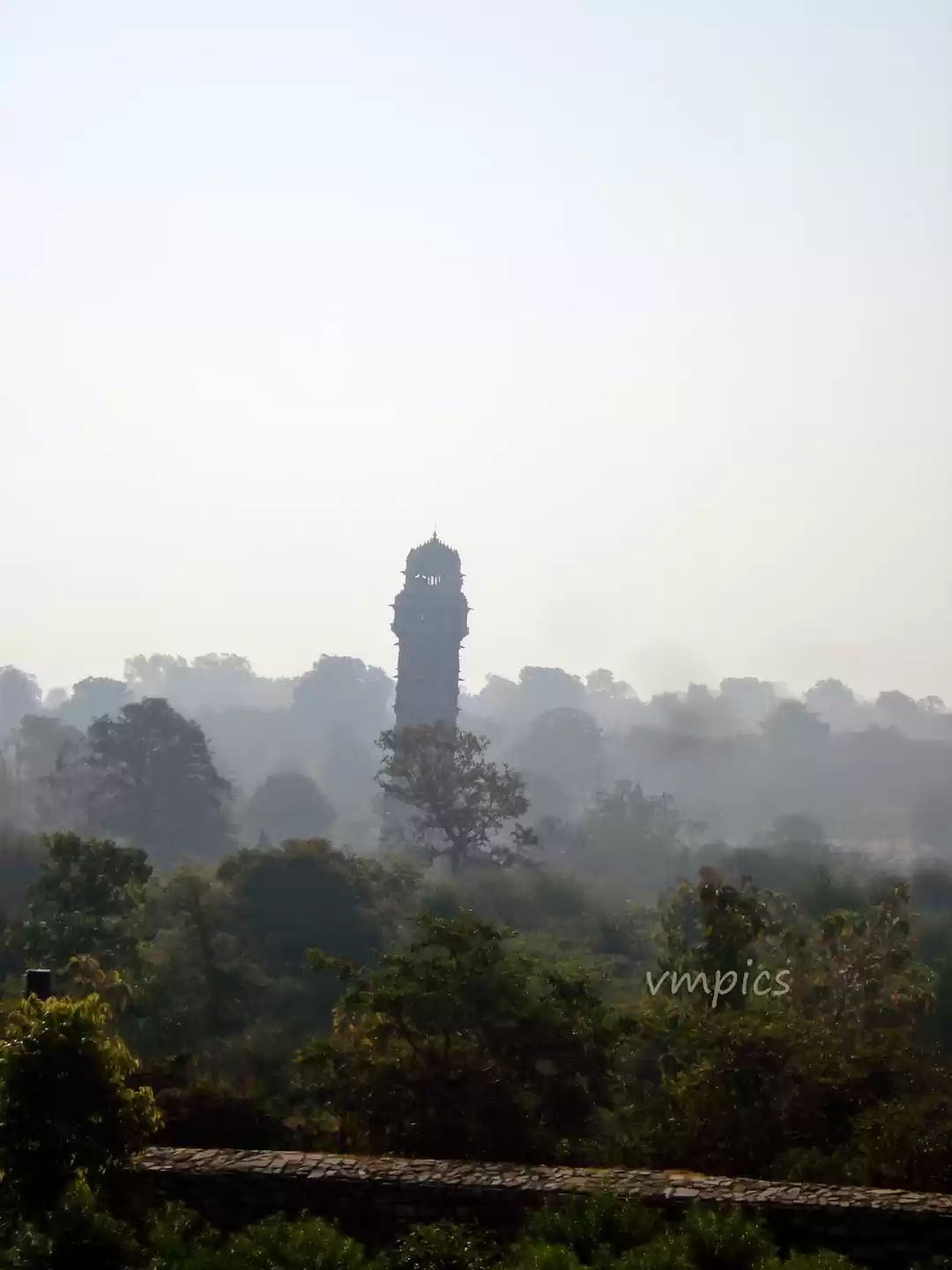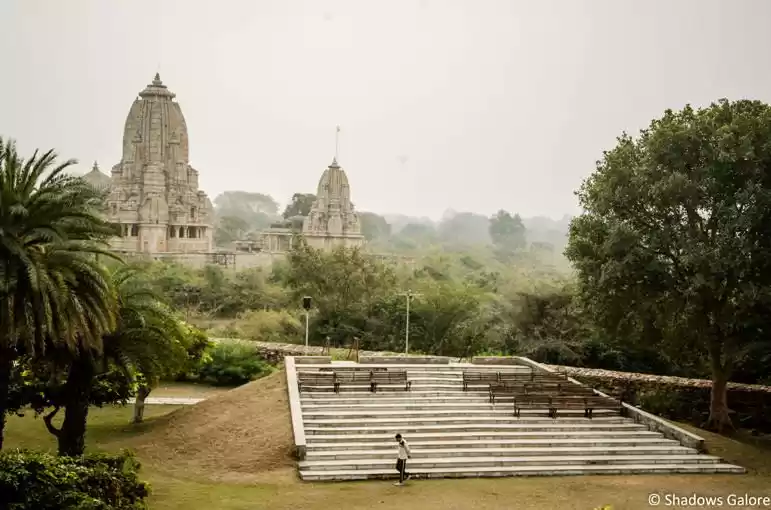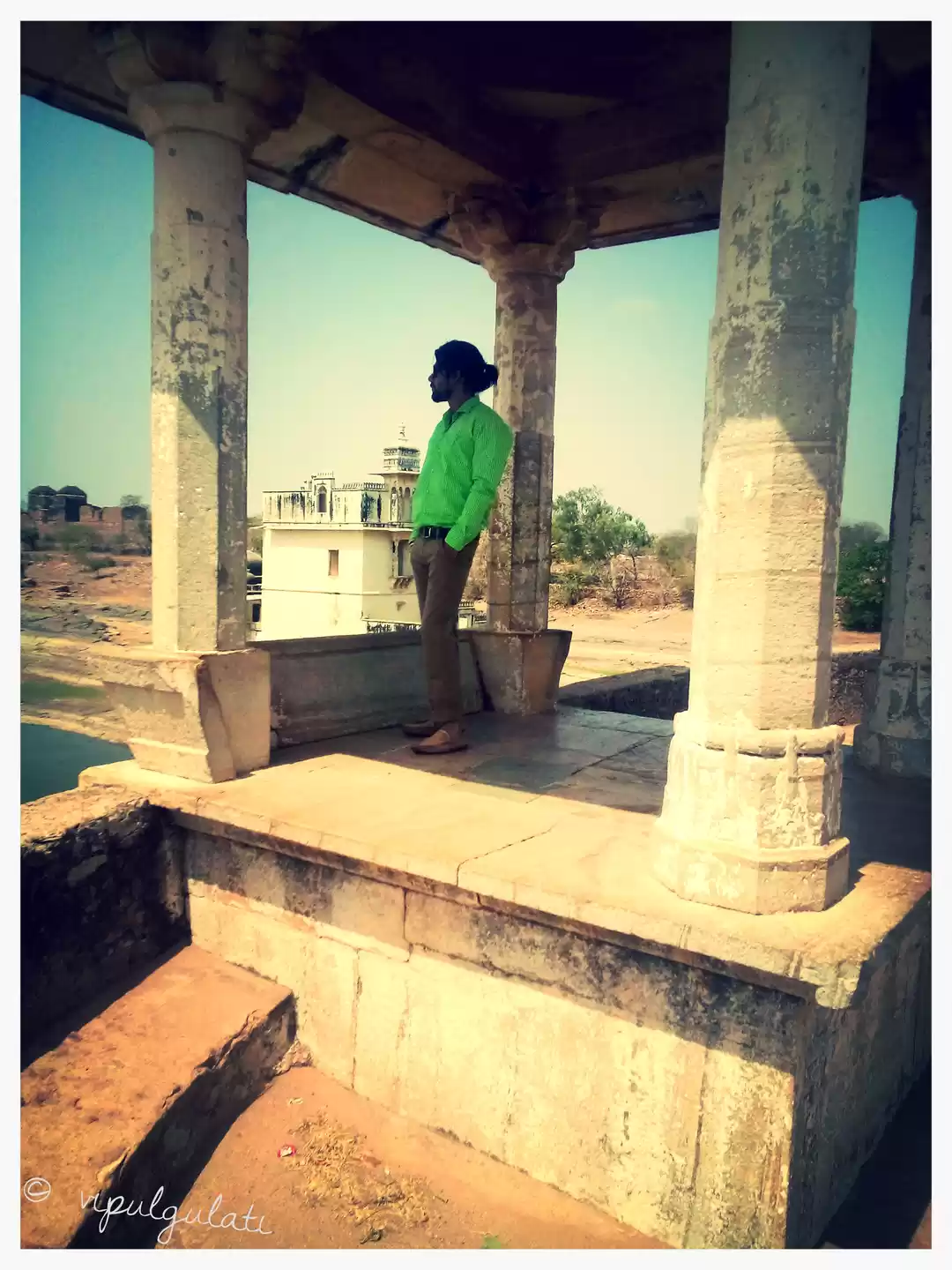
Chittorgarh Fort is reckoned among the most famous fort in India. Not only because of its gigantic structure and oldest fort in Rajasthan but also for its stands throughout many generations. Chittorgarh Fort is considered as unbreakable and immiscible.

Whether Allauddin Khilji or grand Mughal Emperor Akbar, whoever conquered it had to attack with very brave defendants. Chittorgarh Fort creates a historical example of the land of romance, the land of bravery, the land of sacrifices to save the honor, the land of immortality. The best thing Chittorgarh Fort had was the brave warriors who defended the reign till their last breath.

Let start our journey. For that day our plan was to reach Mount Abu from Pushkar via Chittorgarh Fort.
So we headed towards the Chittorgarh Fort. We reach there after covering almost 220km. The road was too good.
At around 11 Am we reached in the front of the Chittorgarh Fort. After eye witnessing the magnificent royal fort, we became so amazed. Our guide gave good narrations of the Fort.
Kumbha Shyam Temple and Meera Bai temple :
We started our exploration from Kumbha Shyam Temple, biggest temple among the 113 Temple of Chittorgarh. Built by Maharaja Bappa Rao at the 7th Century.

The temple, fully made up of sandstone. The first thing which grabs our attention was the beautiful carving of the beautiful designs on the wall as well as on the pillar of the temple. Different statues of the gods and goddess, engraved in a beautiful way. The pillars are really the attention seeker.
ONE MORE PROMINENT SPECIALTY OF THIS TEMPLE, THAT THIS TEMPLE MADE UP OF COMPRISING ARCHITECTURE OF TWO DIFFERENT TEMPLES. THE FRONT PART OF THE TEMPLE IS SIMILAR TO THE FAMOUS SOMNATH TEMPLE OF GUJARAT AND THE BACK PART IS SIMILAR TO THE FAMOUS JAGANNATH TEMPLE OF ORISSA. THE SAME TEMPLE WAS ALSO SITUATED AT ANCHALGARH AND KUMBHALGARH OF RAJASTHAN.
We removed our shoes and stepped inside the temple.

What a beauty!! The series of beautifully engraved pillars made a straight way to the altar. The image of Jagannath, Balaram, and Suvadra placed on the altar. We feel the coldness of the floor which is quite unusual as the temperature is hot outside. Two doors, placed on both sides of the temple. We took a tour throughout the temple and noticed different engraved gods and goddess statues around the walls.
Now we moved out of the temple and our guide made a point to a small temple erected just beside Kumbha Shyam Temple. Now our guide started to give the description. This temple was built mainly for Meera Bai by her beloved husband Bhoj Raj, the crown prince of Mewar.
There lies a little history behind this unique temple. Why unique!! You get to know after some time.
MEERA BAI, BORN INTO A RAJPUT ROYAL FAMILY OF KUDKI DISTRICT OF PALI, RAJASTHAN, INDIA.
When she was young, her grandmother gave a Lord Krishna Idol. From then onwards she used to love Krishna by heart and she believed Krishna as her husband. She was not attracted by the pomp and presentary of the royal life. She always wants to stay with the common people and share all the sorrow and happiness with them. Unwillingly she had to marry Bhoj Raj, but she never thinks him as her husband. When Bhoj Raj came to know this fact he made this temple for Meera Bai. The uniqueness of this temple was that this is the only temple all over the world where one can see the idol of Krishna and Meera Bai, instead of Radha and Krishna.
We take a look at this temple and moved towards next viewpoint of Chittorgarh Fort.
Vijaya Stambha:
When we were heading towards the Vijaya Stambha, from the very far we noticed a big pillar stand erect with the pride. We finally reached the side of the great pillar. We get to know about the pillar from our guide. He told us the full story.
VIJAYA MEANS VICTORY AND STAMBHA MEAN PILLAR. IT WAS BUILT IN 1448 BY MAHARANA KUMBHA FOR THE HAPPINESS OF VICTORY AGAINST THE JOINT COMBAT OF MALWA AND GUJARAT LED BY MAHMUD KHILJI.
This pillar has a special type of structure.

The base and the upper part of the pillar are comparatively broader than the middle part. It has a height of 122 ft with 9 floor and 157 stairs, took around 10 years and 90 lakhs to complete. Also known as “TOWER OF VICTORY”. The wall of the tower, decorated by the god idol stone carving depicts Hindu goddess like Lord Ganga, Lord Yamuna, Lord Saraswati along with the sculptures of Gandharbas and Opsoras.
We see a lot of monkeys there.
Next, our guide told us to follow him and we did the same. We took the right turn and walked straight until we saw a statue of an elephant in the middle of the path.

After crossing the elephant statue we get amazed to see a big gate inviting us and we finally entered into a different world. The magnificent beauty was in front of us.
This is another famous temple inside the Chittorgarh Fort. The name of this temple is Sammidhashwar Temple.

We came to know from our guide that this temple built at the 11th century. The splendid sculpture of the temple is one of the major attractions for tourists, constructed by Bappa Rawal.

INSIDE THE TEMPLE, WE SAW A THREE-FACED IDOL COMPRISING OF LORD BRAHMA, LORD VISHNU, AND LORD MAHESH. THE MAIN FEATURE WHAT WE SAW WAS ONE FACE WAS SMILING, ONE FACE WAS CRYING AND ANOTHER ONE WAS SLEEPING. IT MEANS “GIVING BIRTH”, “UPBRINGING” AND “OBEYING” RESPECTIVELY. THESE 3 FACES HAVE 3 ENTRANCES.
This temple has a specialty ie. In the summertime, one can feel cold inside the temple and in winter time one can feel hot inside.
Then we came out from the temple and walked towards the Gaumukh Reservoir.
Gaumukh Reservoir :
Before coming to the point let me clarify why the Reservoir, known as Gaumukh Reservoir. In Hindu culture, the cow also known as Gau. The shape of the reservoir resembles the shape of cow’s face. So popularly known as Gaumukh (Gau – Cow: Mukh – Face).
This place has a spectacular view comprising of sky, hill, city, fort and Gaumukh Reservoir.
Chittorgarh district of Rajasthan is uniquely famous for its Gaumukh Reservoir in Chittorgarh Fort.

THE MOST INTERESTING FACT ABOUT THIS PLACE IS THE INCREDIBLE SOURCE OF WATER WHICH ENTERS THE RESERVOIR AFTER PASSING THROUGH A LONG AND A VERY THIN STRIP MADE INSIDE THE MOUNTAIN ENCIRCLING THE FORT’S VICINITY. ADDITIONALLY, THE RESERVOIR, ALSO FULFILLED BY UNDERGROUND SPRING WATER, ANOTHER SURPRISING THING.
A small Shivling & goddess Lakshmi lie just below the stream of water falling from Gaumukh. This reservoir is probably still a primary source of water for the fort, as was during ancient times and Rani of Chittorgarh practiced "Sati".
This reservoir is the home of many fishes. It is said to be lucky if one feed the fishes. At our time we were unaware of this fact. So we missed feeding the fishes. Maybe in our future visit to Chittorgarh Fort, we will do that.
This is the perfect spot to take a full panorama picture of Chittorgarh city along with Chittorgarh fort. Gaumukh, always full of water all around the year and still, it’s not exactly known that from where this water comes continuously. So it never disappoints its visitor.
Then we walked towards the Kirti Stambha.
Kirti Stambha :

The Kirti Stambha, built by a Jain merchant Jeeja Bhagerwala during the reign of Rawal Kumar Singh (c. 1179-1191) for the glory of Jainism in the 12th century. It has a height of 22meter. It is situated just beside the Jain temple. The wall of the tower, decorated with the different statues of Jain Idols. Not only the walls but also the ceiling, designed by the engraved Jain idols. Different beautifully engraved statues of Jain temple made us stunt.We started to observe the tower more minutely so that we didn’t miss to see any statues. It is not so big like Vijaya Stambha but both the tower became the most iconic structure of Chittorgarh Fort. Not only that it also flourished the variation of culture in that period.
Now we headed towards the Jauhar Kund of Chittorgarh Fort.
Jauhar Kund :
When we stood in front of Jauhar Kund, at first we can’t feel the specialty of the place. But with time when our guide started to narrate what is the actual meaning of Jauhar Kund and what happened in the early period, it gave us goosebumps.

Let us tell you a bit history behind the Jauhar Kund.
IN THE EARLY DAYS, RAJPUTS HAD A RITUAL OF MASS SELF-IMMOLATION BY WOMEN TO VOID CAPTURE, ENSLAVEMENT, AND RAPE BY INVADERS, WHEN FACING CERTAIN DEFEAT DURING A WAR.
By now some of you also feel the same goosebumps.
The three most prominent Jauhar performed by Rajput women were
The first Jauhar, performed in the 1303 AD, when Ala-ud- din- khilji, the Muslim Sultan of Delhi besieged Chittorgarh Fort, which was under the control of Rana Rawal Ratan Singh. After defeating Rana Rawal Ratan Singh in the battle, Ala-ud- din- khilji want to take Rani Padmini. But Rani Padmini denies to go and she performed Jauhar along with 16000 women.

The second Jauhar, performed on 8th March 1535. When Bahadur Saha of Gujarat attacked the Chittorgarh Fort then there was no ruling king as Rana Sanga died in 1528 CE after the Battle of Khanwa. So Rani Karna Vati took the responsibility as their son Udaysingh was so small to take the responsibility. Rani Karnavati sent a rakhi to Humayun, the second emperor of the Mughal Empire, as a symbol of brother-sister relation and seek help from him to fight against Bahadur Saha. But sadly Humayun reached late and Bahadur Saha already took over the reign. So Karnavati performed Jauhar along with 13000 women.

The third Jauhar, performed in September 1567, when Akbar attacked the Chittorgarh Fort. Rana Udai Singh changed the strategy and he along with his sons and royal women left the fort through a secret route. The Chittorgarh Fort was left under the command of Jaimal Rathor and Patta Sisodia. During the 4 months of besieged by Akbar, all the foods and essentials, begun to finish within the fort and finally, they admit the defeat. From the fear of sexual enslavement, Rajput women performed
After listening to the full history, we actually realize the true meaning of women empowerment.
Moreover, there are 2 Johor Gate on both sides.
Rani Padmini’s Palace :
Later we moved towards Rani Padmini’s Palace, really well maintained, though during our visit the Chittorgarh Palace, washed with chemicals due to the intense heat of the sun which cankered the brightness of the marbles. A neatly curved crystal, placed on the top of the Chittorgarh Palace.

ACCORDING TO THE GUIDE, PRESENTLY THE ORIGINAL CRYSTAL, SHOWCASED IN THE CITY PALACE AND A LESS EXPENSIVE IDENTICAL CRYSTAL PLACED AT THE TOP. DURING OLDEN DAYS, WHEN THE RAYS OF SUN FALL OVER THE CRYSTAL AND PASS THROUGH IT, THE SEVEN COLORS OF THE LIGHT GOT SPLIT (WHICH WE HAVE KNOWN AS VIBGYOR SPECTRUM).
Other than this, Rani Padmini’s Palace in Chittorgarh Fort holds a magnificent history of 1300 CE.
Allaudin Khilji, the second and the most powerful ruler of the Khalji dynasty of Delhi Sultanate in the Indian subcontinent, attacked Chittorgarh Fort and told Rana Ratan Sen to show her wife but Rana Ratan Sen denied that at first. But after being surrounded by Allaudin Khilji and his soldiers for 6months, he ultimately agrees to show his wife Rani Padmini. Along with that, he made a deal that Allaudin Khilji can see her image only through the mirror and if Allaudin Khilji tries to see her face to face then he will be killed.
THE ROOM HAS A VERY INTERESTING AND SCIENTIFIC SETUP. THE MIRROR, PLACED AT SUCH AN ANGLE WITH THE PLACE WHERE SITTING ARRANGEMENT WAS DONE FOR RANI PADMINI SO THAT ANYONE CAN SEE HER ONLY THROUGH THE MIRROR BUT NOT FACE TO FACE.
Now we are in the last part of our Chittorgarh Fort tour and ended our journey by visiting the main attraction of the Chittorgarh Fort, Suraj Pole Gate at the end of Chittorgarh Fort.
SO YOU MUST THINK WHY IT IS CALLED SURAJ POLE?
Suraj Pole, built at 7th century by Raja Suryabankshi. He used to pray for the sun in every morning. So he built the gate to the east of Chittorgarh Fort and named it Suraj Pole.

From there we saw the battlefield where 3 most important battles were fought.
Apart from that one of the main attractions of that battlefield is that if one looks very carefully then one can notice the mountains are shaped in such a unique way that it seems that a large person is lying. The name of the range of mountains is Kumbhakaran Pahari or Kumbhakaran Mountain.

By this, we ended our most memorable journey to Chittorgarh Fort and headed towards our hotel in Mount Abu.
Chittorgarh Fort - Facts File
Chittorgarh Fort is a UNESCO World Heritage Site. Once the touchstone of the Kingdom of Mewar, it continues to be Rajasthan’s claim to fame centuries later. Chittorgarh Fort holds immense historical and cultural value. Keep in mind the following information on Chittorgarh Fort while planning your trip.
1. Where is Chittorgarh Fort located? It is situated in present-day Chittor, Rajasthan.
2. Chittorgarh Fort timings: Open every day of the week from 4:00 am to 10:00 pm.
3. Chittorgarh Fort entry fees: Rs. 20 for adults and Rs. 15 for children.
Have you visited the Chittorgarh Fort? Share your experience at the Chittorgarh Fort in the comments below.
Frequent searches leading to this page:-



